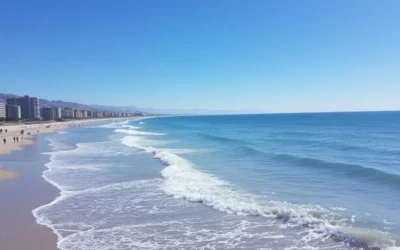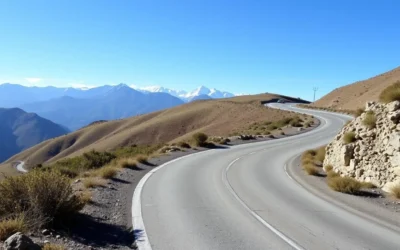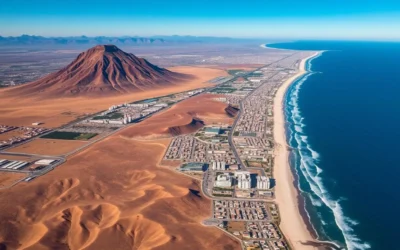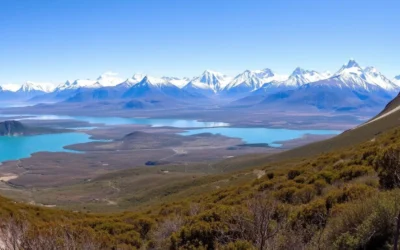Did you know that Chilean Patagonia contains over 17 national parks and 11.5 million protected hectares? This vast wilderness at the southern tip of South America is home to some of the planet’s most dramatic landscapes, where towering granite peaks, electric-blue glaciers, and pristine forests create a paradise for adventure seekers. From the iconic towers of Torres del Paine to the remote fjords of Tierra del Fuego, Chilean Patagonia offers experiences that will leave you breathless.
Getting to Chilean Patagonia
Reaching this remote paradise requires some planning, but the journey is well worth the effort. Most international travelers arrive via Santiago, Chile’s capital, before connecting to one of the gateway cities to Patagonia.
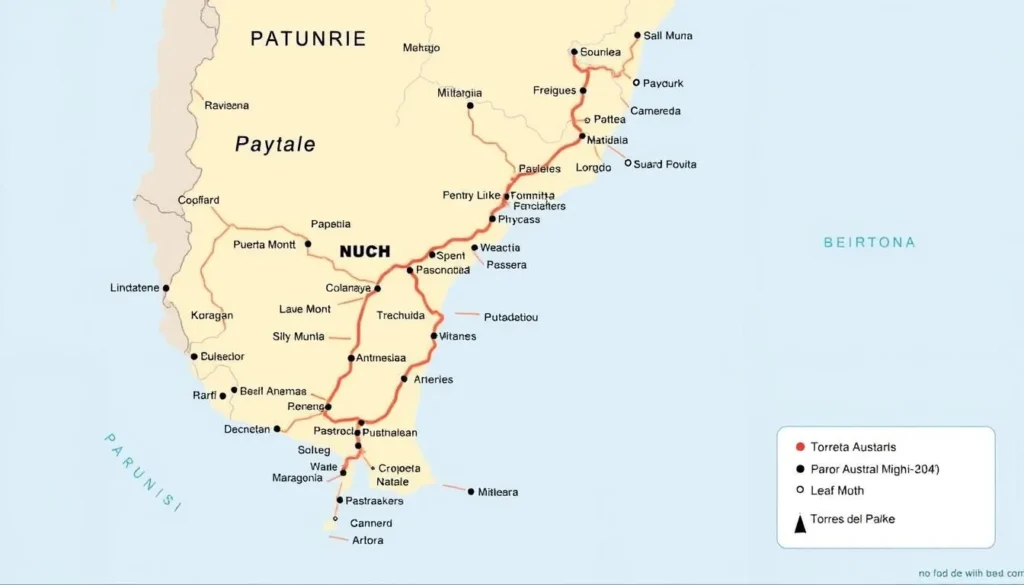
The two main entry points to Chilean Patagonia are:
- Northern Patagonia: Fly into Puerto Montt, the gateway to the Carretera Austral and the Lake District.
- Southern Patagonia: Fly into Punta Arenas, the main hub for accessing Torres del Paine National Park.
International flights to Santiago connect from major cities worldwide, with domestic connections to Patagonian airports operating daily. During peak season (December-February), it’s essential to book flights well in advance as they fill up quickly.
Best Time to Visit Patagonia, Chile
Patagonia’s weather is notoriously unpredictable, with the local saying that you can experience “four seasons in one day.” However, certain months offer better conditions for exploring this magnificent region.
| Season | Months | Weather | Advantages | Considerations |
| Summer | December-February | 10-20°C (50-68°F) | Longest daylight hours, warmest temperatures, all trails open | Peak crowds, highest prices, advance bookings essential |
| Fall | March-May | 5-15°C (41-59°F) | Beautiful autumn colors, fewer crowds, wildlife viewing | Some facilities begin closing in late April |
| Winter | June-August | -5-5°C (23-41°F) | Snow-covered landscapes, lowest prices, solitude | Many trails and facilities closed, limited daylight |
| Spring | September-November | 5-15°C (41-59°F) | Wildflowers blooming, newborn wildlife, increasing daylight | Unpredictable weather, strong winds |
For most visitors, the shoulder seasons of October-November (spring) and March-April (fall) offer the best balance of decent weather, fewer crowds, and lower prices. During these months, you’ll still have access to most trails and activities while enjoying more solitude in this spectacular wilderness.
Getting Around Patagonia
Patagonia’s vast size and limited infrastructure make transportation planning crucial. The region’s dramatic landscapes mean distances can be deceptive, with journeys taking longer than expected due to winding roads and mountain passes.
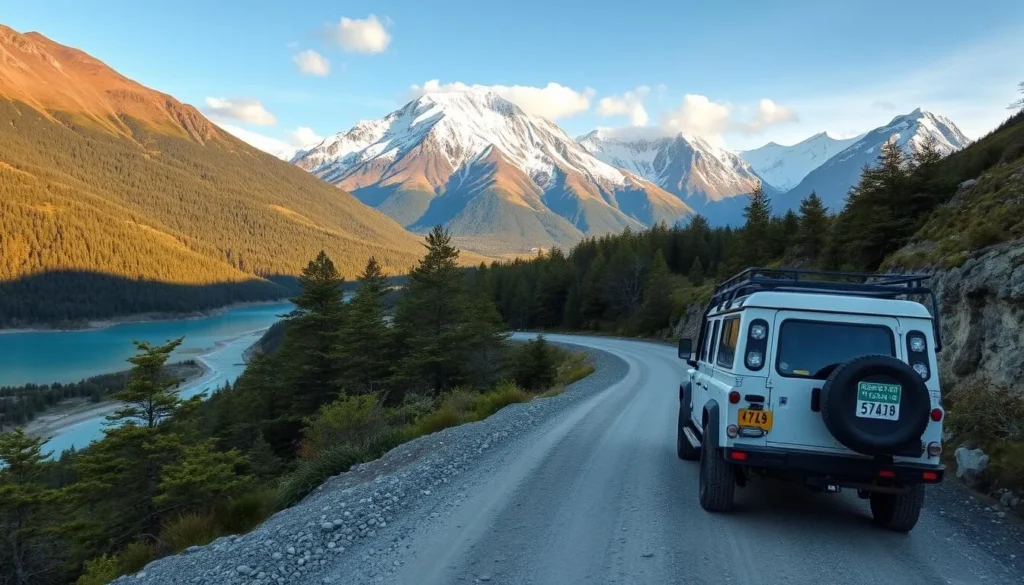
Rental Cars
Renting a car gives you the most flexibility to explore at your own pace. The famous Carretera Austral (Route 7) stretches 1,240 kilometers through northern Patagonia, offering access to remote national parks and stunning viewpoints. In southern Patagonia, a vehicle allows you to visit Torres del Paine on your schedule rather than being tied to bus timetables.
Public Transportation
Bus networks connect major towns and tourist destinations throughout Chilean Patagonia. Companies like Buses Fernández and Buses Pacheco operate regular services between Punta Arenas, Puerto Natales, and Torres del Paine. In northern Patagonia, buses run along the Carretera Austral but with limited frequency, especially in the off-season.
Guided Tours
For those short on time or preferring to leave the logistics to experts, numerous operators offer guided tours throughout Patagonia. These range from day trips to multi-week expeditions and can provide deeper insight into the region’s ecology, geology, and culture.
Where to Stay in Patagonian Chile
Accommodation in Patagonia ranges from rustic refugios (mountain huts) to luxury eco-lodges. Where you stay will greatly impact your experience, with some locations offering unparalleled access to natural wonders.
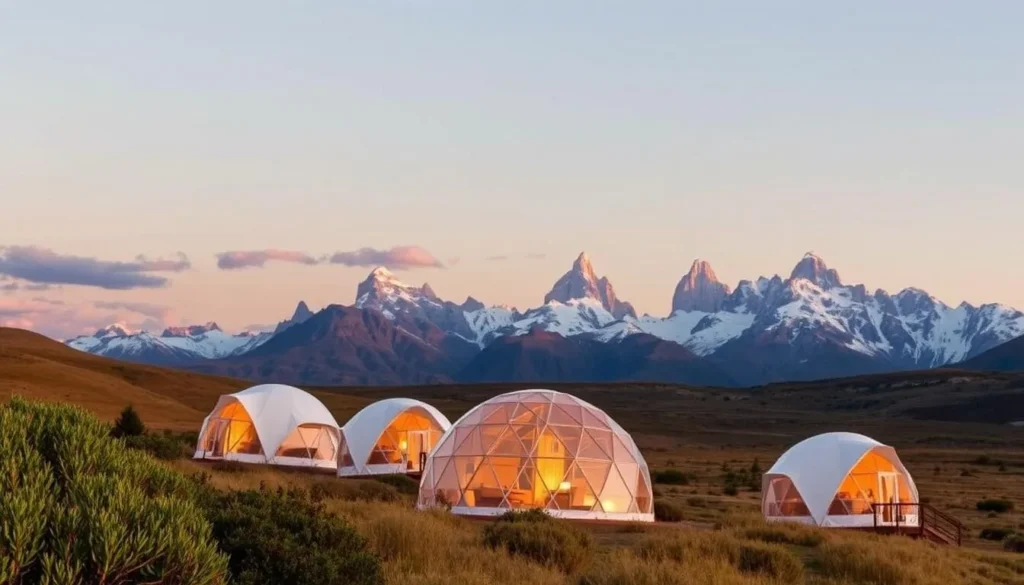
Key Areas for Accommodation
- Puerto Natales: The gateway town to Torres del Paine offers a range of hotels, hostels, and guesthouses. It’s a good base for day trips to the park.
- Torres del Paine: Staying inside the park provides immediate access to trails and views. Options include the iconic EcoCamp Patagonia (geodesic domes), Hotel Las Torres, and various refugios along trekking routes.
- Punta Arenas: The region’s largest city offers the widest range of accommodations and serves as a base for trips to Magdalena Island’s penguin colony.
- Puerto Río Tranquilo: This small town on the shores of General Carrera Lake is the access point for the stunning Marble Caves.
- Futaleufú: For those seeking white-water adventures, this town offers lodges and guesthouses near world-class rapids.
During high season (December-February), accommodations throughout Patagonia book up months in advance. This is especially true for lodgings within Torres del Paine National Park and along popular trekking routes.
Torres del Paine National Park: The Crown Jewel
No visit to Chilean Patagonia would be complete without experiencing Torres del Paine National Park. This UNESCO Biosphere Reserve features some of the most dramatic mountain scenery on the planet, with the iconic granite towers (torres) rising sharply above glacial lakes and golden pampas.
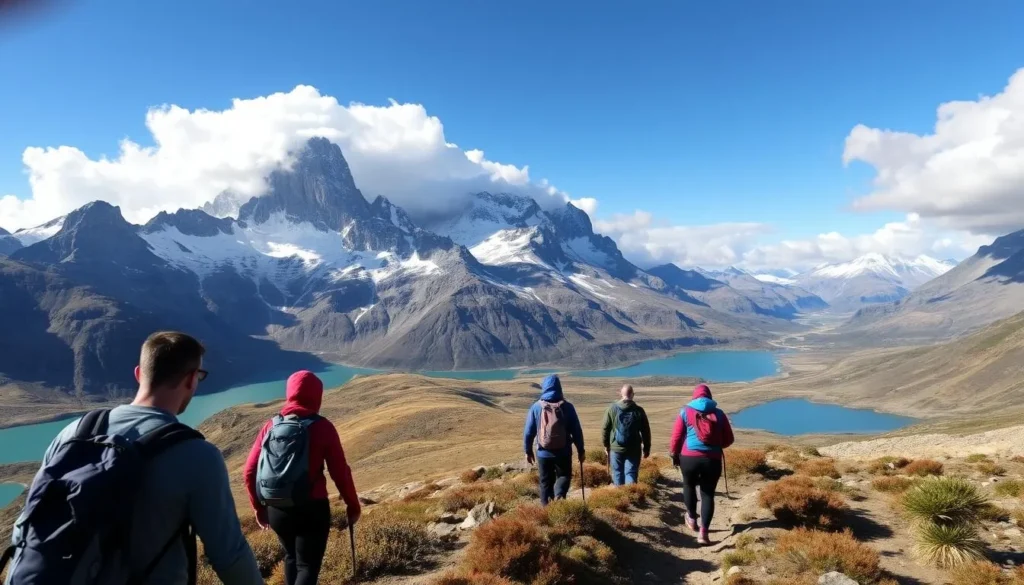
Must-Do Activities in Torres del Paine
- The W Trek: This iconic 4-5 day hike takes you through the park’s most spectacular scenery, including the base of the Torres, the French Valley, and Glacier Grey.
- The O Circuit: For more adventurous hikers, this 7-9 day trek completes a full loop of the Paine Massif, adding the less-visited backside of the park.
- Wildlife Watching: The park is home to guanacos, pumas, Andean condors, and many other species. Early morning and late afternoon offer the best viewing opportunities.
- Grey Glacier Navigation: Boat tours take you close to the impressive face of this massive glacier, part of the Southern Patagonian Ice Field.
- Horseback Riding: Experience the park like the local gauchos, with rides available for all skill levels.
The park entrance fee varies by season, ranging from $35-49 USD for foreign adults. If planning to hike the W or O treks, you must book campsites or refugios well in advance through the official concessionaries: CONAF, Vertice Patagonia, and Las Torres Patagonia.
The Carretera Austral: Chile’s Epic Road Trip
The Carretera Austral (Southern Highway) is one of the world’s great road trips, stretching 1,240 kilometers through Chilean Patagonia’s northern wilderness. This largely unpaved route winds through temperate rainforests, past glaciers, alongside turquoise rivers, and between snow-capped mountains.
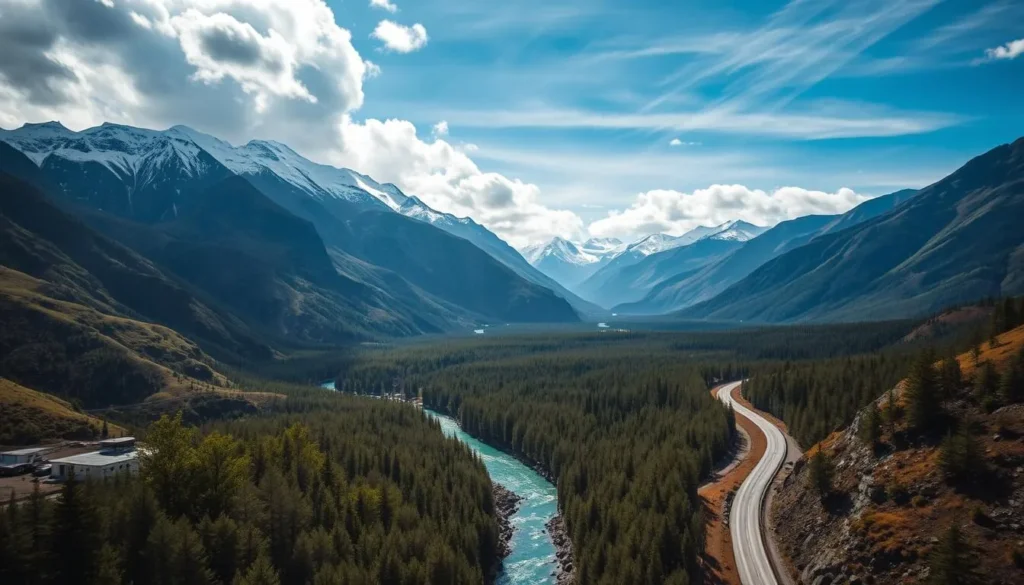
Highlights Along the Carretera Austral
- Pumalín Douglas Tompkins National Park: Explore ancient temperate rainforests and hike to the crater of Chaitén Volcano.
- Queulat National Park: Marvel at the hanging glacier (Ventisquero Colgante) suspended above a lagoon.
- Futaleufú: Experience world-class white-water rafting on the powerful Futaleufú River.
- Marble Caves: Take a boat or kayak tour of these stunning natural formations on General Carrera Lake near Puerto Río Tranquilo.
- Cerro Castillo National Park: Hike to turquoise lagoons beneath the castle-like peaks that give this park its name.
- Patagonia National Park: Explore this conservation success story with its recovering grasslands and growing wildlife populations.
Allow at least two weeks to properly experience the Carretera Austral. The route includes several ferry crossings, and services can be limited, so careful planning is essential. The best time to drive is from November to March when roads are most accessible.
The Marble Caves: Nature’s Sculpture Gallery
On the shores of General Carrera Lake (South America’s second-largest lake) lies one of Patagonia’s most photogenic natural wonders: the Marble Caves. These extraordinary formations, known locally as Capillas de Mármol (Marble Chapels), have been shaped by 6,000+ years of wave action eroding the marble.

The caves’ appearance changes throughout the year as water levels rise and fall, and with the shifting angle of the sun. The marble itself appears to change color, from deep blues to soft greys and whites, all complemented by the turquoise waters of the lake.
Visiting the Marble Caves
- Access Point: Tours depart from the small town of Puerto Río Tranquilo on the Carretera Austral.
- Tour Options: Choose between small boat tours (30-90 minutes) or kayaking excursions for a more intimate experience.
- Best Time: Early morning offers the calmest water conditions and best lighting for photography.
- Photography Tips: Bring a polarizing filter to reduce glare on the water and enhance the colors.
The caves are at their most spectacular when the lake’s water level is low (February-March), revealing more of the marble formations. However, tours operate year-round, weather permitting.
Wildlife Encounters in Chilean Patagonia
Patagonia offers some of South America’s most rewarding wildlife viewing opportunities. The region’s varied ecosystems support a diverse array of species, many of which can be observed in their natural habitats with a bit of patience and good timing.
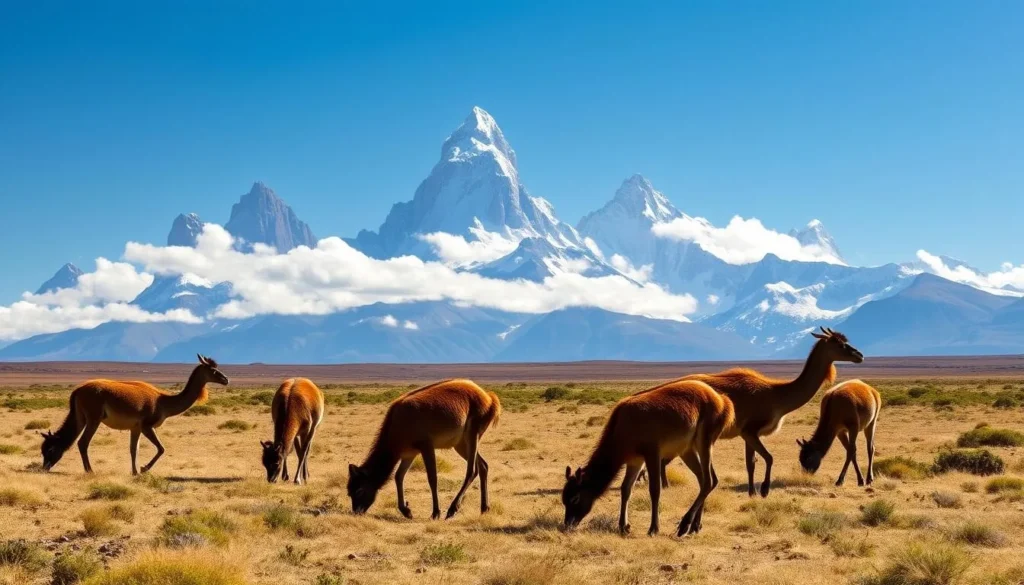
Key Wildlife Species and Where to Find Them
- Pumas: Torres del Paine National Park has one of the highest densities of pumas in the world. Dawn and dusk offer the best chances for sightings.
- Guanacos: These wild relatives of llamas are abundant throughout Patagonia, especially in Torres del Paine and Patagonia National Park.
- Huemul Deer: This endangered Andean deer can occasionally be spotted in the forests of Torres del Paine and along the Carretera Austral.
- Andean Condors: With wingspans up to 3.3 meters, these massive birds soar above the mountains throughout Patagonia.
- Magellanic Penguins: Visit Magdalena Island near Punta Arenas to see a colony of over 120,000 penguins (October to March).
- Marine Mammals: Boat trips from Punta Arenas can yield sightings of dolphins, sea lions, and occasionally whales.
For serious wildlife enthusiasts, specialized photography tours offer the best chances of spotting elusive species like pumas. These typically involve early mornings, late evenings, and the expertise of local trackers who know the animals’ habits.
Navigating the Patagonian Fjords
The labyrinthine fjords of southern Chile offer some of Patagonia’s most spectacular and least-visited landscapes. Carved by ancient glaciers, these deep channels are flanked by towering mountains and dotted with remote islands, creating a maritime wilderness unlike any other.
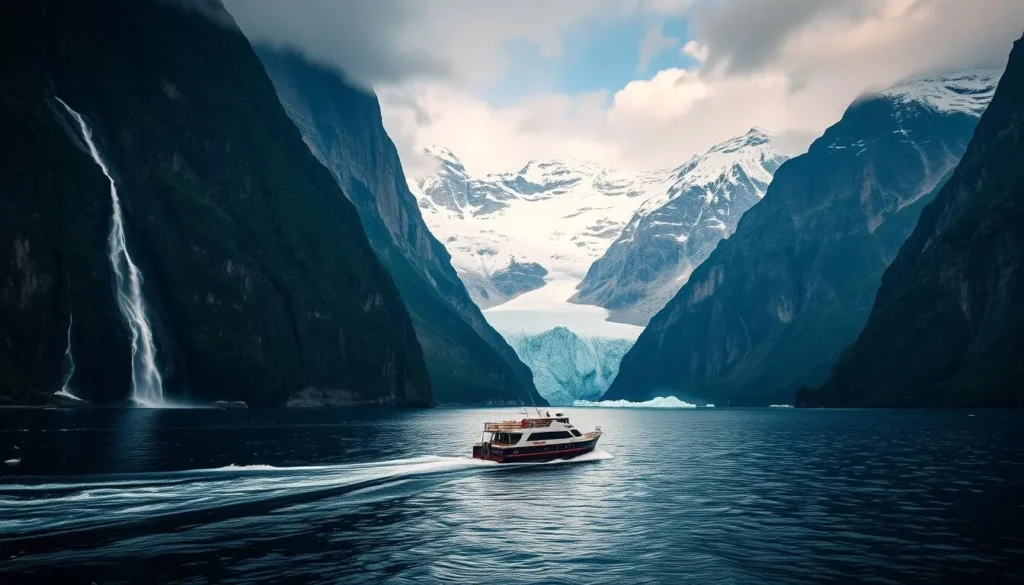
Fjord Exploration Options
- Navimag Ferry: This passenger and cargo ferry between Puerto Montt and Puerto Natales traverses the Patagonian channels over 3-4 days, offering a budget-friendly way to experience the fjords.
- Australis Cruises: Luxury expedition cruises between Punta Arenas and Ushuaia navigate the Beagle Channel and fjords of Tierra del Fuego, with daily excursions to glaciers and historic sites.
- Day Trips: From Puerto Natales, boat excursions visit the Balmaceda and Serrano Glaciers in Bernardo O’Higgins National Park.
- Kayaking Expeditions: For the adventurous, multi-day kayaking trips explore the more accessible fjords with camping on remote beaches.
The fjords are home to diverse marine life, including Magellanic dolphins, sea lions, and numerous seabird species. Lucky visitors might even spot humpback whales, which feed in these waters during the southern summer (December to March).
Cape Horn: The End of the Earth
At the southernmost tip of the American continent lies Cape Horn (Cabo de Hornos), the mythical meeting point of the Atlantic and Pacific Oceans. For centuries, this treacherous passage was feared by sailors, with over 800 shipwrecks recorded in these stormy waters.
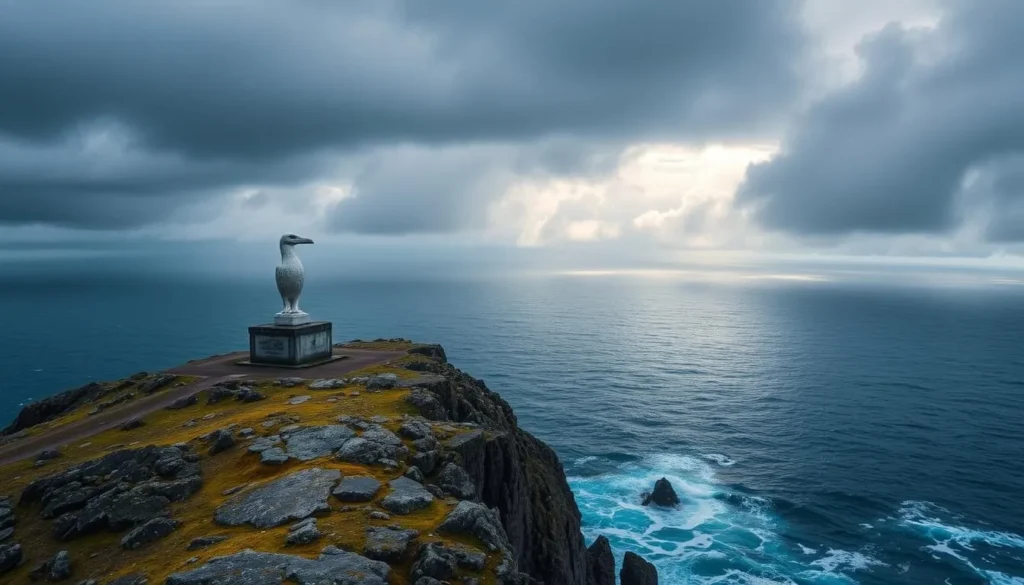
Today, visiting Cape Horn is a bucket-list achievement for adventurous travelers. The island features a lighthouse, a small chapel, and a striking monument depicting an albatross in flight – a memorial to the sailors who perished in these waters.
Reaching Cape Horn
- Expedition Cruises: Australis operates cruises that attempt landings at Cape Horn, weather permitting. These depart from either Punta Arenas or Ushuaia.
- Weather Considerations: Landings are only possible in favorable conditions, which occur roughly 50% of the time.
- What to Expect: If landing is possible, visitors climb wooden stairs to the top of the island, where they can visit the lighthouse, chapel, and monument.
Standing at Cape Horn, looking out over the vast Southern Ocean with Antarctica the next landmass, creates a profound sense of being at the edge of the world. It’s a fitting culmination to a Patagonian adventure.
Experience Patagonian Culture at an Estancia
For a glimpse into Patagonia’s rural heritage, spend time at an estancia (ranch). These working farms offer insight into the traditional lifestyle of Patagonian gauchos (cowboys) and the region’s sheep-farming history.
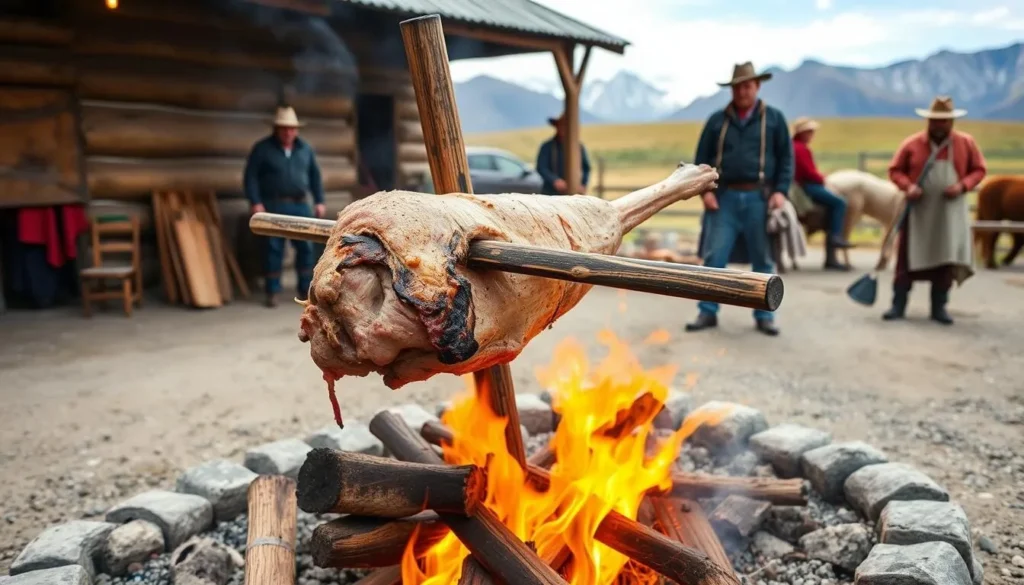
Typical Estancia Activities
- Horseback Riding: Explore the Patagonian countryside on horseback, guided by local gauchos.
- Sheep Shearing Demonstrations: Learn about the wool industry that shaped Patagonia’s development.
- Traditional Asado: Feast on lamb slow-roasted over an open fire in the traditional Patagonian style.
- Gaucho Skills: Watch demonstrations of traditional horsemanship and cattle-working techniques.
- Farm Tours: See the daily operations of a working Patagonian ranch.
Many estancias offer day visits, but for the full experience, consider an overnight stay. Some historic estancias have been converted into comfortable lodges while maintaining their authentic character and continuing their working operations.
Notable Estancias in Chilean Patagonia
- Estancia Cerro Guido: A historic 100,000-hectare working sheep ranch near Torres del Paine with stunning mountain views.
- Estancia Bahía Esperanza: Located on the shores of Last Hope Sound near Puerto Natales, offering boat access and traditional activities.
- Estancia La Peninsula: A working sheep farm accessible by boat from Puerto Natales, offering day trips with demonstrations and traditional meals.
Practical Tips for Visiting Chilean Patagonia
Patagonia’s remote nature and variable conditions require careful preparation. These practical tips will help ensure your adventure goes smoothly.
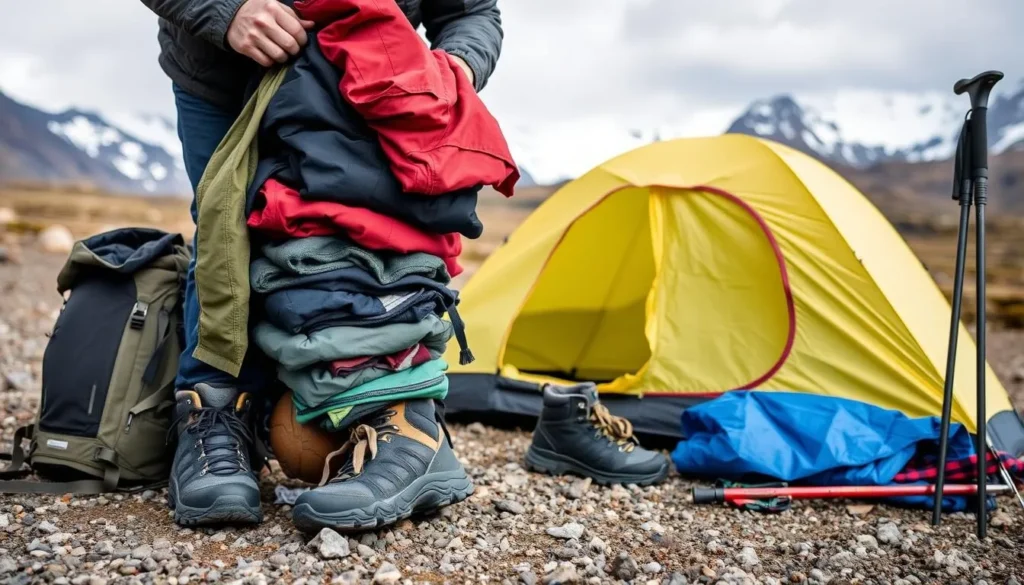
Essential Information
Weather Preparation
- Layer Your Clothing: Weather can change rapidly, so bring moisture-wicking base layers, insulating mid-layers, and waterproof outer layers.
- Wind Protection: Patagonia’s infamous winds can exceed 100 km/h. Bring a sturdy windproof jacket and hat.
- Sun Protection: The ozone layer is thinner over Patagonia. Use high SPF sunscreen, sunglasses, and a hat.
Money and Communications
- Cash: Many remote areas have no ATMs or card facilities. Bring Chilean pesos for smaller towns and parks.
- Connectivity: Cell service is limited outside towns. Download maps and information in advance.
- Language: While tourist areas have some English speakers, basic Spanish phrases will be very helpful.
Health and Safety
- Travel Insurance: Comprehensive insurance covering emergency evacuation is essential for this remote region.
- Drinking Water: While many streams in Patagonia are clean enough to drink from, a water filter or purification tablets are recommended.
- Medical Facilities: Medical services are limited in remote areas. Bring a well-stocked first aid kit.
- Trail Safety: Always register your hiking plans with park authorities and stick to marked trails.
Conservation
- Leave No Trace: Pack out all trash and follow park regulations regarding camping and fires.
- Wildlife Distance: Maintain a respectful distance from all wildlife, including guanacos and pumas.
- Fire Prevention: Wildfires have devastated parts of Patagonia. Never leave campfires unattended and check local regulations.
Embrace the Wild Beauty of Chilean Patagonia
From the towering spires of Torres del Paine to the remote fjords of Tierra del Fuego, Chilean Patagonia offers adventures that will stay with you for a lifetime. This is a land of superlatives – the most dramatic mountains, the clearest lakes, the most pristine wilderness – all waiting to be explored by those willing to venture to the end of the earth.
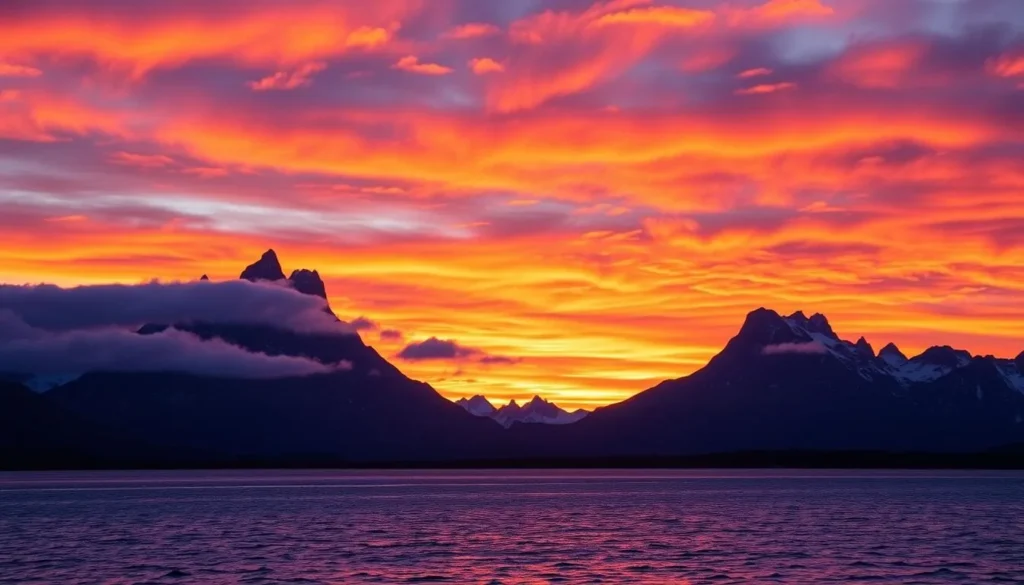
Whether you’re hiking beneath towering peaks, kayaking through marble caves, or simply standing in awe before a massive glacier, Patagonia reminds us of nature’s raw power and beauty. It challenges us physically and rewards us with experiences that can’t be found anywhere else on Earth.
As you plan your journey to this remarkable corner of the world, remember that Patagonia’s remoteness is part of its charm. Embrace the unpredictable weather, the long distances, and the occasional logistical challenges – they’re all part of the adventure that makes visiting Chilean Patagonia so rewarding.
